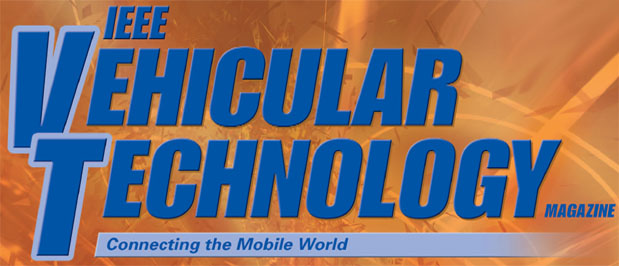Call For Papers:
IEEE Future Networks Special Issue on 6G Technologies and Applications (5)
Important Dates |
|
|---|---|
| Manuscript Submission by: | 1 July 2023 |
| First Round Reviews by: | 1 September 2023 |
| Second Round Submissions by: | 16 October 2023 |
| Second Round Reviews / Editorial Decision: | 30 November 2023 |
| Publication: March 2024 | |
The academic and industrial communities have shifted their focus to 6G, which is expected to be a significant improvement over previous generations of wireless communication. 6G is anticipated to offer a lean network that utilizes intelligence to adapt network topology to support a high quality of experience for connected users. This new technology is set to revolutionize various industries as it will enable the development of innovative applications. Although much is yet to be learned about 6G technology, it is expected it will usher in a new era of connectivity and innovation. For example, 6G will integrate both virtual and physical realities bringing forward new paradigms of data distribution and network operations. This vision will transform mobile network infrastructure from connectivity provider to service hosting platform.
6G networks will be embedding artificial intelligence (AI) into functional and operational modules to create smart infrastructures with proactive, secure, and adaptive systems. These networks will expand beyond terrestrial environments, incorporating analytics, energy-efficient mechanisms, and blockchain systems to boost network autonomy and enable self-synthesizing and self-healing operations. Fuelled by ever-growing connectivity and data rate demands, 6G will cover new spectrum bands and optical wireless communications in addition to novel or advanced transmission technologies, the use of reconfigurable intelligent surfaces as well as the co-design of communications and sensing functionalities, among others.
Sponsored by the IEEE Future Networks initiative, this series aims to help the research and industrial communities define and shape the architecture, technologies and services for 6G networks. We are soliciting original contributions that are not published or currently under consideration by any other journals. The topics of interest include, but are not limited to:
- 6G dimensions and fundamental analyses
- New PHY and medium access technologies
- MU-MIMO and new antenna technologies
- Terahertz communications
- Wireless networking using the optical spectrum: LiFi, visible light communications (VLC), optical camera communication (OCC) and free-space optical (FSO) communications
- Reconfigurable intelligent surfaces
- Integrated communications and sensing
- Semantic communications
- Deterministic communications and networks
- New core network entities and interfaces
- 6G network assurance and service optimization
- Cloudification, multi-access edge computing and IoT
- Cyber security and trusted platforms
- Digital Twin and Quantum communications
- AI/ML intelligent and autonomous networks
- Green 6G networks, wireless harvesting technologies and energy efficiency
- 6G satellite, non-terrestrial networks and UAV networks
- 6G-enabled vertical applications and services
Submissions should clearly identify how they relate to 6G and how they would progress beyond current 5G technologies. All manuscripts should contain state-of-the-art material presented in tutorial-style, and must adhere to IEEE VTM guidelines.
Submit PDF version of complete manuscripts to ScholarOne Manuscripts™. Papers presenting original and state-of-the art research and technical contributions will also be considered. However, their presentation should be in tutorial-style and accessible for all readers.
Guest Editors
To be announced

